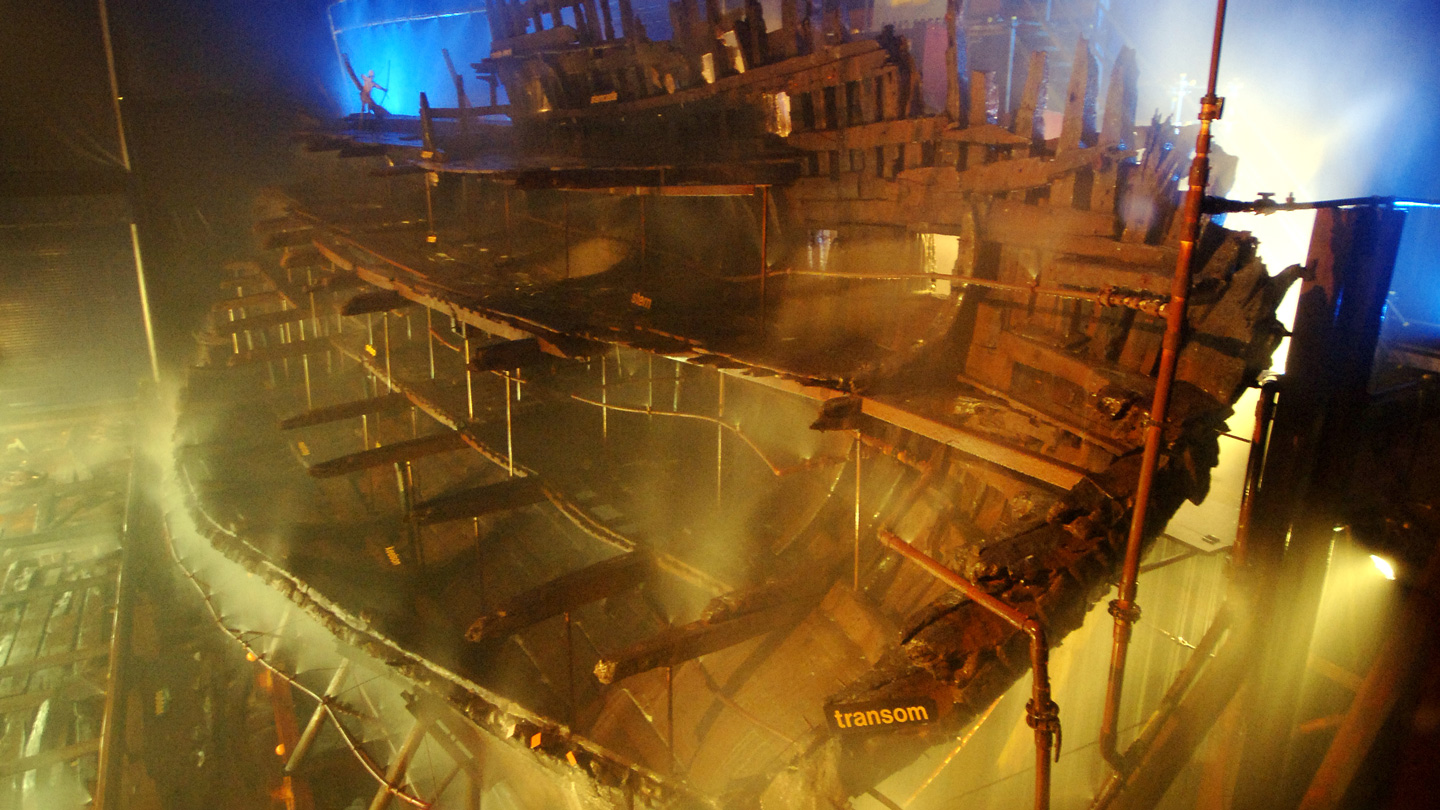Creatures flocked to the ship to feast upon the timbers; gribble (Limnoria sp.) and shipworm (Teredo navalis) were two of the most damaging visitors, eating away at the wood and leaving behind a spongy network with little to no strength.

Teredo, the ship worm.
Other species attached themselves to the timbers and objects within the ship. These creatures were removed during conservation work in the 1980s and the 1990s, but the outlines of their bodies are still visible on some of the objects.

Ostrea edulis, the flat oyster, which have made their home on a stone shot, or ‘cannon ball’ recovered from the Mary Rose.
For other visitors, the shipwreck was more of a playground. Before the hull was lifted from the seabed, divers on the site were often joined by groups of cuttlefish, including one (or more) affectionately called Cuthbert!
Another interesting explorer was a long spined sea scorpion, Taurulus bubalis, also known as the ‘little bull’. This fish is recognisable for its spiny head and dorsal fin as well as a long spines on its cheeks. Such fish are common off the coast of Portsmouth.

Taurulus bubalus
This fish was found inside a lantern during its excavation from the orlop deck in 1981. Archaeologists questioned whether it was a fish from the Tudor period. When the Mary Rose sank, the orlop deck was buried under silt fairly quickly, which may have trapped creatures that were exploring the shipwreck. The silt created an oxygen-free (anoxic) environment which prevented bacteria from eating the fish, leaving it preserved.
However, we can’t be certain that this is a Tudor fish.

Diver’s drawing of where the fish was found
When the Mary Rose was excavated, the divers kept records of what they were doing and what they found. In these records, the fish is described as a ‘corpse’ which suggests that it died recently. When the lanterns were uncovered, they were left on the seabed for a few days before they were lifted out of the water. This means that there was plenty of time for a fish to explore the exposed lanterns and get trapped inside. Therefore, it is more likely that the fish is from the 1980s rather than from the Tudor period.
But if the fish could get inside the lantern, why could it not get out?
Many fish have something called a swim bladder – an organ that is filled with air and allows the fish to control their buoyancy. Sea scorpions do not have this organ and they have to keep swimming to stop them from sinking. Maybe the space within the lantern was too small for the fish, especially if it was filled with silt. This would have forced the fish to stop swimming, to sink, and eventually suffocate.
The lanterns were built from wood and horn but only the wooden parts have survived. During the excavation, these wooden parts collapsed and the lid of the lantern shattered. Perhaps the fish became trapped within the lantern during this collapse.
While we can’t be sure exactly how this fish died, it is an interesting addition to the examples of the marine life that explored the shipwreck all the way from the Tudor period to modern times.



